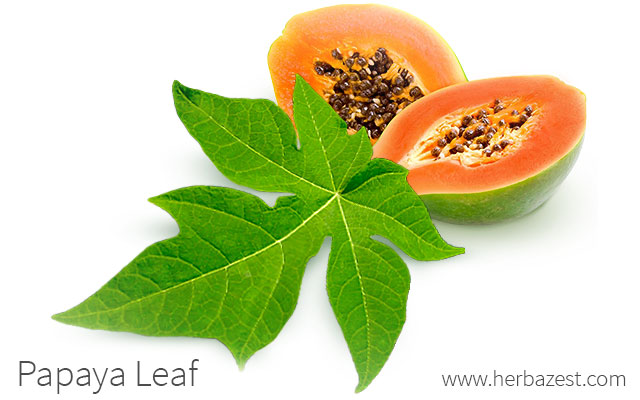Papaya tree leaves grow from the upper portion of the Carica papaya plant, shading the flowers and fruits like a giant overhead parasol. Extending from horizontally-arranged petioles, the lobular shape of papaya leaf blades includes pronounced yellow veins, and it can be as large as one to two feet (30 - 60 cm) wide. Though it is easily overlooked, the papaya leaf holds many important medicinal properties, and it is a good source of nutrition.
Are Papaya Leaves Edible?
Though the ripe papaya fruit is the most popular part used for culinary preparations, papaya tree leaves are also edible.
In Southeast Asia, young papaya leaves are cooked like spinach. An enhanced rendition of this recipe is to sauté papaya tree flowers and leaves with fresh veggies in a flavorful stir-fry seasoned with garlic, cayenne, onion, salt, black pepper, and other spices.
MATURE PAPAYA TREE LEAVES NEED TO BE BOILED IN SEVERAL POTS OF FRESH WATER TO REMOVE THEIR BITTER TASTE.
Some health food stores carry papaya leaf tea, consisting on the dried and crushed papaya tree leaves and intended to be used as an herbal infusion. It is also a common practice to use crushed young papaya leaves to tenderize tough meats by wrapping them up overnight.
In some instances, papaya tree leaves are used in cattle farming as an emergency food for livestock during dry spells. Pet owners of Asia and the South Pacific Islands even feed young papaya leaves to fish.
Benefits of Papaya Leaves
The research on papaya leaf has changed some scientists and healthcare providers' views on herbal therapy, as the leaves of the Carica papaya plant have turned out to be an all-natural, cost-effective medicinal herb with great potential.
In traditional folk medicine, powerful decoctions made from bitter papaya tree leaves have been used to cure urinary infections and as a laxative to calm stomach troubles in both humans and cattle. The dried papaya leaf is also smoked as a respiratory drug, easing irritation from asthma.
In tropical regions, it is common the use of the papaya leaf for dengue treatment.
A study published in the International Journal of Scientific & Engineering Research (2013) detailed the nutritional profile of brown, yellow, and green papaya tree leaves from various hilly and coastal regions of northern India. Of all the selected varieties, the brown papaya leaf exhibited the greatest nutritional value as a good source of essential minerals, like iron, magnesium, zinc, and manganese. Meanwhile, green and yellow papaya tree leaves contained high levels of calcium and sodium, respectively. The study further concluded that papaya leaf may be an efficient nutraceutical ingredient in herbal drug formulations.
In addition to their nutritional value, one of the most important benefits of papaya leaves is their antimicrobial activity, as suggested by an in vitro study published in the International Journal of Research Studies in Biosciences (2014), in which a papaya leaf extract demonstrated a strong inhibitory action against bacterial infections. These findings echo previous studies on the pathogen-fighting abilities of papaya leaf extract and highlight its importance in topical wound-healing treatments.
Though it doesn't get as much airtime as the deliciously sweet and fleshy fruit, the papaya leaf is an important part of the Carica papaya plant. With both culinary and medicinal benefits, as well as everyday domestic value, papaya tree leaves are worthy of a second glance.
Sources
- California Rare Fruit Growers, Papaya, Carica papaya L., Caricaceae
- International Journal of Research Studies in Biosciences, Investigation on antibacterial activity of carica papaya leaf extracts against wound infection-causing bacteria, 2014
- International Journal of Scientific & Engineering Research, Estimation of minerals in Carica papaya L. Leaf found in Northern India by using ICP-OES technique, 2013
- National Tropical Botanical Garden, Meet the Plants, Carica papaya
- Papaya the Medicine Tree, p. 117




